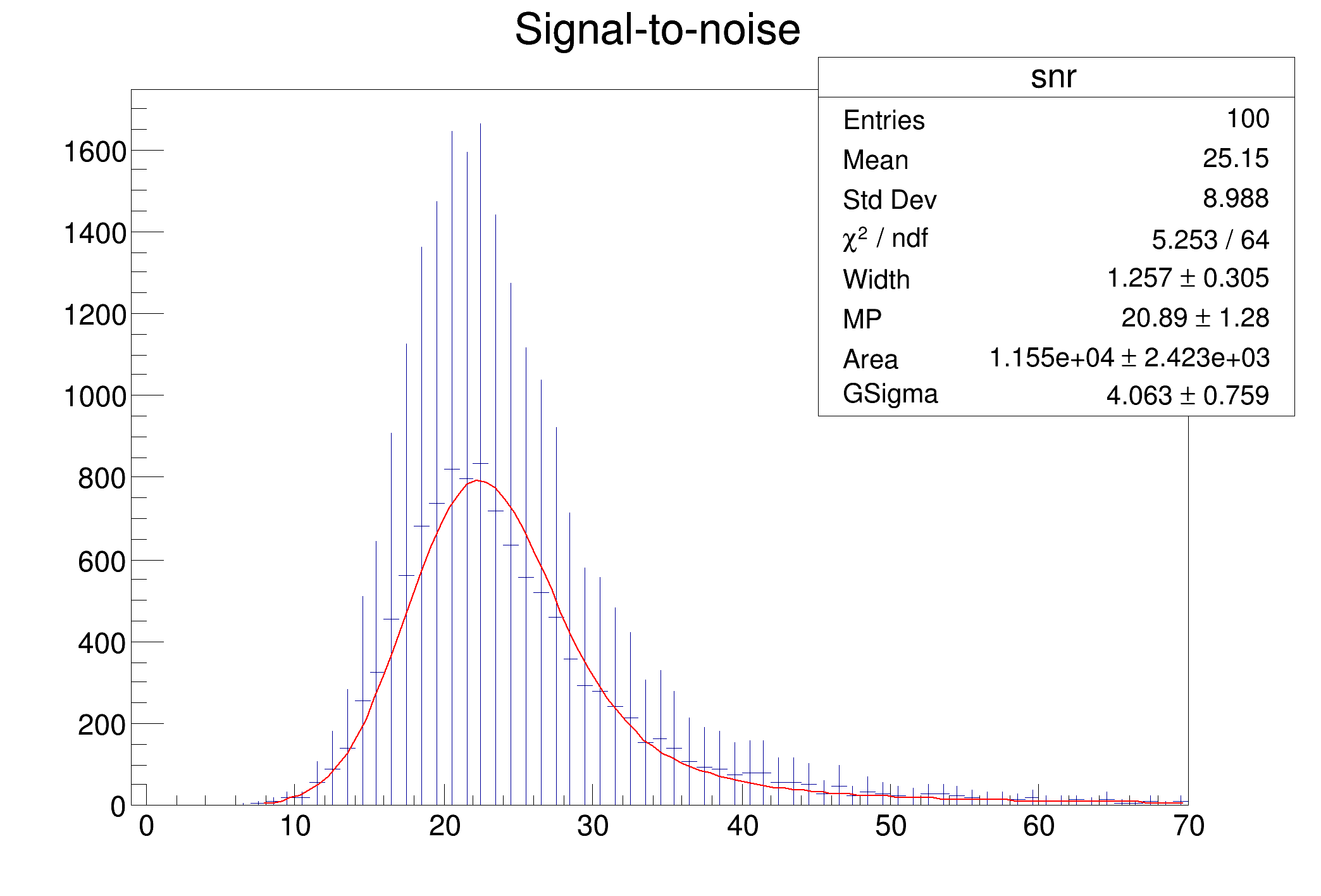mpc = par[1] - mpshift * par[0];
xlow =
x[0] - sc * par[3];
xupp =
x[0] + sc * par[3];
step = (xupp-xlow) / np;
for(i=1.0; i<=np/2; i++) {
xx = xlow + (i-.5) * step;
xx = xupp - (i-.5) * step;
}
return (par[2] * step *
sum * invsq2pi / par[3]);
}
{
sprintf(FunName,
"Fitfcn_%s",his->
GetName());
TF1 *ffitold = (
TF1*)
gROOT->GetListOfFunctions()->FindObject(FunName);
if (ffitold) delete ffitold;
TF1 *ffit =
new TF1(FunName,langaufun,fitrange[0],fitrange[1],4);
for (i=0; i<4; i++) {
}
for (i=0; i<4; i++) {
}
return (ffit);
}
p = params[1] - 0.1 * params[0];
step = 0.05 * params[0];
lold = -2.0;
while ( (
l != lold) && (i < MAXCALLS) ) {
i++;
l = langaufun(&
x,params);
step = -step/10;
p += step;
}
if (i == MAXCALLS)
return (-1);
p = maxx + params[0];
step = params[0];
lold = -2.0;
i = 0;
while ( (
l != lold) && (i < MAXCALLS) ) {
i++;
step = -step/10;
p += step;
}
if (i == MAXCALLS)
return (-2);
p = maxx - 0.5 * params[0];
step = -params[0];
lold = -2.0;
i = 0;
while ( (
l != lold) && (i < MAXCALLS) ) {
i++;
step = -step/10;
p += step;
}
if (i == MAXCALLS)
return (-3);
FWHM = fxr - fxl;
return (0);
}
void langaus() {
Int_t data[100] = {0,0,0,0,0,0,2,6,11,18,18,55,90,141,255,323,454,563,681,
737,821,796,832,720,637,558,519,460,357,291,279,241,212,
153,164,139,106,95,91,76,80,80,59,58,51,30,49,23,35,28,23,
22,27,27,24,20,16,17,14,20,12,12,13,10,17,7,6,12,6,12,4,
9,9,10,3,4,5,2,4,1,5,5,1,7,1,6,3,3,3,4,5,4,4,2,2,7,2,4};
TH1F *hSNR =
new TH1F(
"snr",
"Signal-to-noise",400,0,400);
for (
Int_t i=0; i<100; i++) hSNR->
Fill(i,data[i]);
printf("Fitting...\n");
Double_t sv[4], pllo[4], plhi[4], fp[4], fpe[4];
pllo[0]=0.5; pllo[1]=5.0; pllo[2]=1.0; pllo[3]=0.4;
plhi[0]=5.0; plhi[1]=50.0; plhi[2]=1000000.0; plhi[3]=5.0;
sv[0]=1.8; sv[1]=20.0; sv[2]=50000.0; sv[3]=3.0;
TF1 *fitsnr = langaufit(hSNR,fr,sv,pllo,plhi,fp,fpe,&chisqr,&ndf);
langaupro(fp,SNRPeak,SNRFWHM);
printf("Fitting done\nPlotting results...\n");
}
R__EXTERN TStyle * gStyle
virtual void SetRange(Int_t first=0, Int_t last=0)
Set the viewing range for the axis from bin first to last.
virtual Int_t GetNDF() const
Return the number of degrees of freedom in the fit the fNDF parameter has been previously computed du...
virtual Double_t GetParError(Int_t ipar) const
Return value of parameter number ipar.
Double_t GetChisquare() const
virtual Double_t * GetParameters() const
virtual void SetParLimits(Int_t ipar, Double_t parmin, Double_t parmax)
Set limits for parameter ipar.
virtual void Draw(Option_t *option="")
Draw this function with its current attributes.
virtual void SetParameters(const Double_t *params)
virtual void SetParNames(const char *name0="p0", const char *name1="p1", const char *name2="p2", const char *name3="p3", const char *name4="p4", const char *name5="p5", const char *name6="p6", const char *name7="p7", const char *name8="p8", const char *name9="p9", const char *name10="p10")
Set up to 10 parameter names.
1-D histogram with a float per channel (see TH1 documentation)}
virtual Double_t GetMean(Int_t axis=1) const
For axis = 1,2 or 3 returns the mean value of the histogram along X,Y or Z axis.
TAxis * GetXaxis()
Get the behaviour adopted by the object about the statoverflows. See EStatOverflows for more informat...
virtual TFitResultPtr Fit(const char *formula, Option_t *option="", Option_t *goption="", Double_t xmin=0, Double_t xmax=0)
Fit histogram with function fname.
virtual Int_t Fill(Double_t x)
Increment bin with abscissa X by 1.
virtual void Draw(Option_t *option="")
Draw this histogram with options.
virtual const char * GetName() const
Returns name of object.
void SetOptStat(Int_t stat=1)
The type of information printed in the histogram statistics box can be selected via the parameter mod...
void SetLabelSize(Float_t size=0.04, Option_t *axis="X")
Set size of axis labels.
void SetOptFit(Int_t fit=1)
The type of information about fit parameters printed in the histogram statistics box can be selected ...
Double_t Gaus(Double_t x, Double_t mean=0, Double_t sigma=1, Bool_t norm=kFALSE)
Calculate a gaussian function with mean and sigma.
Double_t Landau(Double_t x, Double_t mpv=0, Double_t sigma=1, Bool_t norm=kFALSE)
The LANDAU function.
static long int sum(long int i)

 Convoluted Landau and Gaussian Fitting Function (using ROOT's Landau and Gauss functions)
Convoluted Landau and Gaussian Fitting Function (using ROOT's Landau and Gauss functions) 